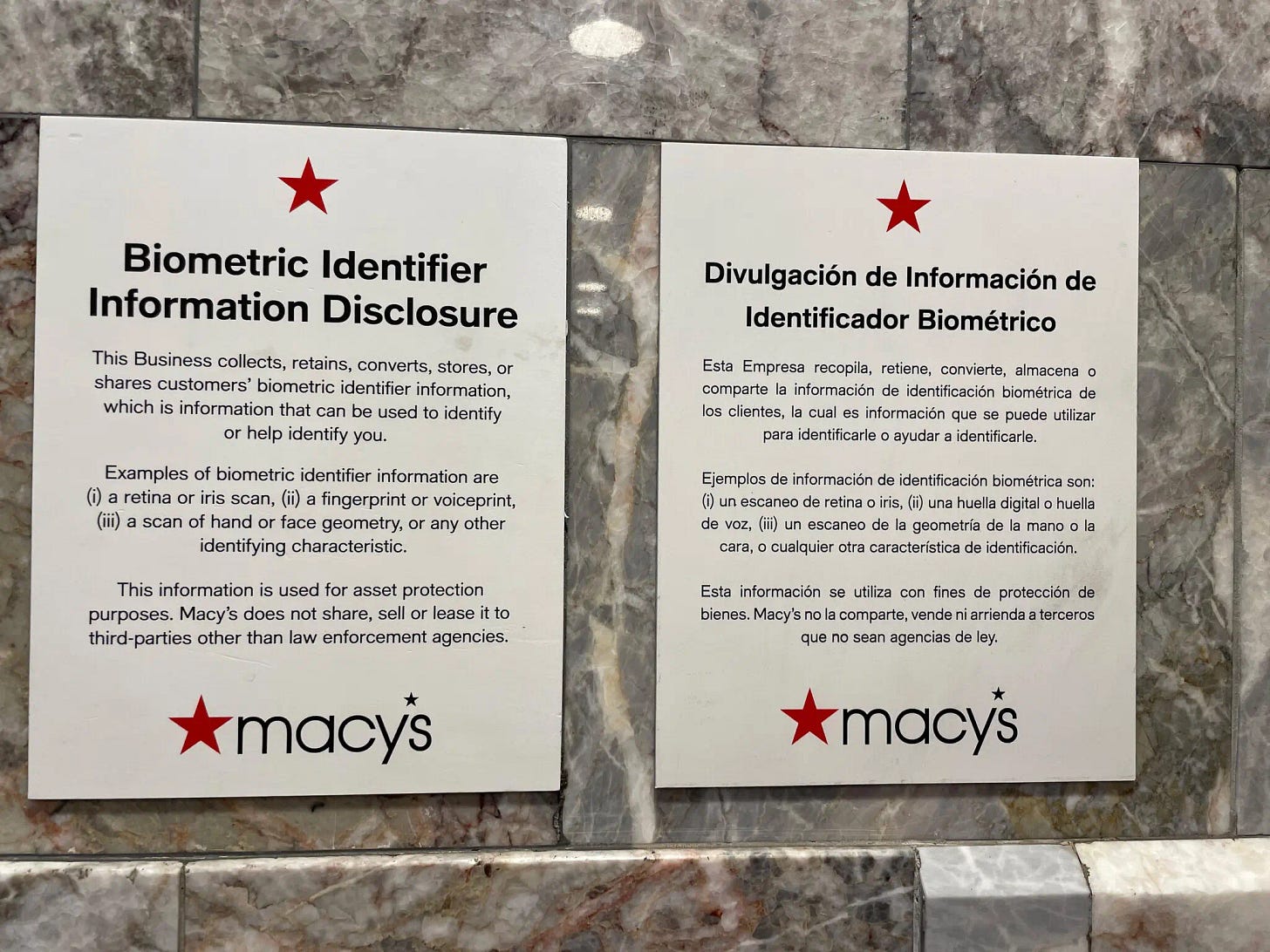the commerce audit (tCa) observes and comments on the current and emerging commerce landscape, focusing on retail experience and design
[ mar14 - mar15 2023 ] :
your 2 year old makes the household decisions now, mom
the smartest employers are focused on supporting the well-being of their workforce as retail workers fear massive layoffs
stores are scanning your retinas, know your voice, and recognize your face
an update on the state of inflation in february
[ spaces ]
🌲 the timber revolution : a series investigating the potential of mass timber in architecture and its potential effects on the planet and the way we live (re: sustainability and technology)



see more: eleven upcoming buildings with mass-timber structures
also see: the carbon revolution, the solar revolution
[ consumer insight ] : gen alpha loves McDonald’s, watching YouTube TV and Disney+, and telling their parents what to buy at the store
*gen alpha = those born from 2013 - 2025 (i.e., some of these guys aren’t even born yet)
generation alpha is the most plugged-in generation of children yet, and they are developing strong brand awareness by age 9
37% of gen alpha parents said their kids' favorite restaurant was McDonald's, handily besting second-place Chick-fil-A's 6%
the kids are also watching lots of YouTube (like unboxing videos and toy hauls) and asking their parents to buy stuff when they see it in stores
consider this: gen zalpha (aka anyone born from 1996 - 2025) are about to have major spending power 🤑
many major retailers have already made cuts in 2023, and now Nordstrom will cut about 2,500 jobs as it shutters its Canada business
retail workers are feeling 1. overwhelmed and understaffed and 2. scared for their own job. as a consumer, try to be extra mindful of how you treat retail workers, and employers, consider the mental well-being of your employees - any extra support or care you can provide for your employees could make all the difference right now ❤️🩹
the most innovative employers are already turning to new tech like AI and drones to help relieve their employees:
Ikea claims an industry first as it says it is now using 100 drones for stock inventory
100 drones are now at work during non-operational hours, with the aim of improving stock accuracy and securing availability of products for online or physical retailing. this means that co-workers no longer need to manually confirm each pallet.
“introducing drones and other advanced tools – such as, for example, robots for picking up goods – is a genuine win-win for everybody. it improves our co-workers’ wellbeing, lowers operational costs, and allows us to become more affordable and convenient for our customers,” says Tolga Öncu, head of retail at Ingka Group
while other employers are focusing on positive culture and growth to support their workforce:
Sweetgreen co-founder Nicolas Jammet says culture ‘is our whole business’
Sweetgreen takes an employee-centric approach to their business, recognizing the importance and weight of the people on the ground managing day-to-day operations,
"a lot of our managers are in their early twenties running the multimillion-dollar restaurant!" he said. "it's like they're running their own little business. it's our responsibility and job to enable them with the tools."
(btw, if you haven’t tried Sweetgreen yet, i’d highly recommend it for a healthy fast-casual meal)
FWIW, i don’t think either approach is necessarily better than the other (for the employee) - so long as the employer is making legitimate effort to improve retail worker quality of life - but keeping up with both innovative tech and business culture is 100% necessary for sustained business growth in the future 📈
which stores are scanning your face? 👀

new AI vision technology is being used in stores to:
increase security measures, and
cameras equipped with AI facial recognition can flag a known shoplifter anytime one enters the store. once flagged, security personnel can keep a closer eye on the individual or escort them out if they’re banned from the premises.
it’s important to note that the technology cannot flag the act of shoplifting itself, or an individual shoplifter who is not known or has not been apprehended in the past. it simply acts as a heads-up to store security when a known shoplifter does enter, so they can pay closer attention. with repeat offenders accounting for 40.1% of all incidents where a suspect was identified, AI-powered security acts as an effective first step toward reducing the impact of repeat shoplifting.
to make informed decisions to enhance the store experience
by integrating a vision AI system within a store’s existing camera network, retailers can gain insights into what kinds of shoppers are visiting the store, at what times, how long they’re staying, what sections they’re shopping in, whether or not they’re making purchases and more.
this data can inform decisions to adjust store setup to streamline the movement of customers to priority areas, reorganize product placements, influence in-store marketing or even modify the type of music or lighting.
but
retailers aren’t necessarily following legal guidelines around the use of the biometric identifier tech, and consumers are growing uncomfortable with [or for the most part, are just unaware of] this unseen surveillance. in NYC, any retailer using the tech is required to post an exterior sign in disclosure, and Times journalist Kashmir Hill struggled to find signs of compliancy from retailers in her neighborhood.
are you comfortable with biometric identifier technology? where and how should it be used? what level of awareness and/or consent should people receive when being monitored? consider different use cases - like being used by the police to solve crime vs by retailers to improve store experiences
[ inflation update ]

lastly, a reminder for retailers, strategists, and designers from Shopify’s global innovation evangelist Brian Solis:
there are two ways that 2030 could play out for a retailer. one is, “We’re just going to keep iterating with all of this incredible new technology.” on that path, the retailer gets stuck on iterative investments and incremental designs that build on the past, which limits the possibilities. the other path is, “we’re going to innovate and reimagine what shopping should look like in 2030—in a way that the customer either already wants or doesn’t know yet that they want—and once they have it, they’ll feel like they can’t live without it.”
thanks for reading, and see ya next time 👋 ,






